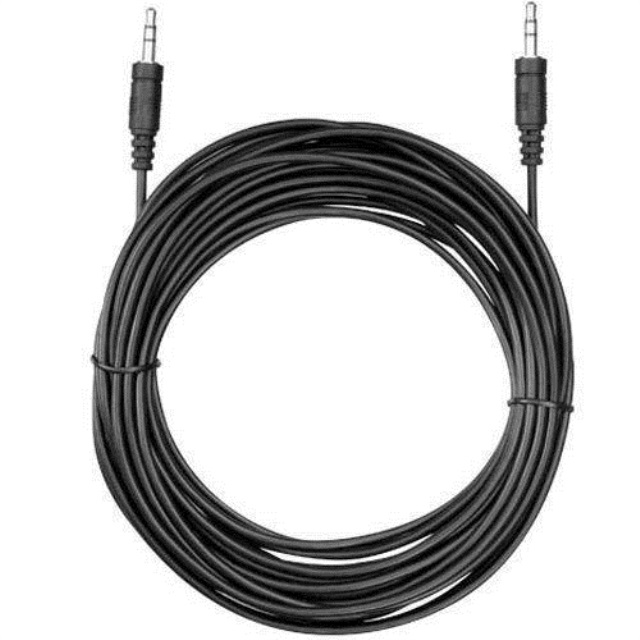

#CHATTERBOX HEADSET EXTENSION CORD FULL#
A full charge seems to last for a full day of instruction on track - note that my instructor "duty cycle" rarely has me with a hot intercom for more than four hours in a day, your mileage may vary. Using the extension cord with my instructor headset, I used my head unit "loose" between us for the past year, much like an instructor using two student headsets. Probably because of that, the mounting clip broke. My head unit got tangled up on my NecksGen HANS device when it was mounted on my helmet. Student headsets have reasonably long cords, and the loose head unit can usually be safely stashed in a cup holder or some other 'cavity' between the seats in the vehicle. Many instructors I know buy two student headsets and never bother mounting the head unit to their helmet. Don't forget to then fasten the helmet (easy to forget). Bend the mic boom around to the the mouth area, inside the helmet. Slide the headset up into the gap with the padded side towards their ear. Have them grab the helmet strap and pull it "down and out", away from their ear. You just have to give your student a glance to see if the mic is tucked up inside instead of drooping outside the front of the helmet.įor the student headset, I have my student put their helmet on, unbuckled. I have yet to encounter a full-face helmet that it didn't also work well with. The student headset is designed for an open face helmet, with a boom mic that's rigid enough to keep the mic in place. Be sure to use a decent flush-cutting cutter on the zip-tie, as this is a really bad place to have a sharp burr. Savvy folks strategically zip-tie the cord to the boom mic first thing to provide the needed strain relief. It's pretty natural for the student to pull on the cord to get the headset out of their helmet. One "design flaw" in the student headset is that the cable has virtually no strain relief, and the headsets see some abuse. Alternatively, you can use an extension cord. The student headset has a reasonably long cord, and can connect directly from the student headset into the instructor's head unit. This headset has a short cord, designed to plug directly into the helmet mounted head unit. It has two ear pieces and a mic on a loose cord that velcros to the mouth area of a full face helmet. I started off with what I call the "Instructor Headset" (not pictured, but linked to Amazon) permanently installed in my helmet. The head unit kit includes various ways to mount the head unit to the instructor helmet directly - screw clamps, sticky patches, stuff like that. A "wall wart" (charger) is included, but I often just plug the USB cord into an Anker universal USB charger. It has a rechargable battery built in, and it's charged with a USB cord.
#CHATTERBOX HEADSET EXTENSION CORD PRO#
You need one "head unit", the Tandem Pro 2 kit. I'll lay it out for you here, along with links to Amazon, along with things I've learned along the way. When I was first purchasing the system, I had trouble figuring out "what was what" and visited my local brick and mortar race shop.

I'm not aware of any electrical difference between the R and P ports, and I swap them around when troubleshooting an iffy connection. The ports on the head unit are marked "R", "P", and "DC" - Rider, Passenger & Direct Current (charging port) respectively. They're primarily designed around motorcyclists, for communicating with your 'passenger' on the seat behind you. Nobody loves them, they're just relatively cheap and simple, and they mostly work. As I rolled into HPDE instructing in 2015, a majority of instructors were using the Chatterbox Tandem Pro 2 wired intercom system.


 0 kommentar(er)
0 kommentar(er)
